Essential Tips for Building Your AR-15 Pistol Using a Lower Build Kit
Introduction
Building your own AR-15 pistol lower build kit can be a rewarding venture, but it comes with its own set of challenges and considerations. We’ll outline the essentials you need to know to get started right away.
Here’s a quick overview to address your questions:
- AR-15 Basics: Modular firearm, can switch parts.
- Pistol vs. Rifle: Shorter barrel for pistols, rifles are longer.
- Importance of Compliance: Follow ATF rules strictly.
The AR-15 is a favorite among firearm enthusiasts for its versatility and ease of customization. Unlike a traditional rifle, the AR-15 can easily be adapted for various roles, from home defense to sport shooting, by swapping out different components.
When deciding between an AR-15 pistol and a rifle, the primary difference lies in barrel length and the overall build. An AR-15 pistol typically has a barrel length of under 16 inches and lacks a stock, making it compact and maneuverable. On the other hand, AR-15 rifles will have longer barrels and a stock, making them suitable for different shooting scenarios.
Compliance with federal and state regulations is crucial when building your AR-15 pistol. The Bureau of Alcohol, Tobacco, Firearms and Explosives (ATF) has strict guidelines that must be adhered to, especially regarding the conversion of lowers and the overall dimensions of your build.

Understanding AR-15 Pistol Lower Build Kits
What is an AR-15 Pistol Lower Build Kit?
An AR-15 Pistol Lower Build Kit includes the essential components needed to complete the lower receiver of an AR-15 pistol. This kit typically contains:
- Lower Parts Kit (LPK): Includes the trigger, hammer, pins, springs, and other small parts.
- Buffer Tube: Specifically designed for pistols, often shorter and without the capability to accept a rifle stock.
- Pistol Brace: A stabilizing brace that helps with control and accuracy.
These kits allow enthusiasts to assemble the lower part of their AR-15 pistol, ensuring all parts are compatible and function correctly together.
Choosing the Right AR-15 Pistol Lower Build Kit
When selecting an AR-15 Pistol Lower Build Kit, consider the following key factors:
Material and Quality
The materials used in the components can significantly affect the durability and performance of your build. Look for kits that include:
- Mil-Spec Components: These parts meet military specifications and are known for their high quality and reliability.
- 7075-T6 Aluminum: This is a high-strength aluminum alloy often used in buffer tubes and other critical parts.
Brand Reputation
Brands like Magpul are highly regarded in the firearm community for their precision and durability. Choosing a reputable brand ensures you’re getting components that have been rigorously tested and proven to perform well.
Compatibility
Ensure the kit is compatible with your lower receiver. Some kits are designed to work specifically with certain brands or models. Check the specifications to avoid any compatibility issues during assembly.
Functionality and Usage
The primary function of an AR-15 Pistol Lower Build Kit is to provide all the necessary parts to complete the lower receiver assembly. This includes:
- Trigger Assembly: Ensures a smooth and reliable firing mechanism.
- Safety Selector: Allows the user to switch between safe and fire modes.
- Magazine Release: Enables quick and efficient magazine changes.
These components are designed to work together seamlessly, providing a reliable and efficient shooting experience.
Material, Quality, and Brand
Investing in a high-quality AR-15 Pistol Lower Build Kit can make a significant difference in the performance and longevity of your firearm. Opt for kits that use premium materials and are manufactured by reputable brands.
By choosing the right kit, you ensure that your AR-15 pistol will not only function correctly but also withstand the rigors of regular use. This attention to detail and quality is what sets apart a well-built AR-15 pistol from a mediocre one.
Legal Considerations for Building an AR-15 Pistol
Building an AR-15 pistol involves navigating a maze of regulations and legal requirements. Understanding these rules is crucial to ensure your build is compliant and avoids legal trouble.
Can You Use an AR-15 Lower for an AR Pistol?
The short answer is yes, but with conditions. The ATF Form 4473 is essential when purchasing a lower receiver. This form records whether the lower is intended for a rifle or a pistol at the time of purchase. A lower receiver initially registered as a rifle cannot be legally converted into a pistol. However, a lower receiver initially registered as “other” can be assembled into either a rifle or a pistol.
The Difference Between AR Pistol Lower and AR Rifle Lower
While the core components are similar, there are key differences between AR pistol lowers and AR rifle lowers:
-
Buffer Tubes: AR pistols use a pistol buffer tube or a robust pistol buffer tube without provisions for attaching a shoulder stock. This is crucial for maintaining legal compliance.
-
Stock Compatibility: AR pistols use a stabilizing brace instead of a shoulder stock. Installing a shoulder stock on an AR pistol reclassifies it as a short-barreled rifle (SBR), which requires special ATF approval.
-
Assembly Differences: The assembly process for AR pistols includes installing a stabilizing brace and ensuring all parts comply with pistol regulations.
Converting a Rifle Lower to a Pistol Lower: Legal Implications
Converting a rifle lower to a pistol lower is fraught with legal pitfalls. According to ATF regulations, once a lower has been assembled as a rifle, it cannot be legally converted into a pistol.
Key points to consider:
-
ATF Rules: The ATF strictly enforces these rules to prevent the illegal creation of SBRs, which are subject to the National Firearms Act (NFA) regulations.
-
Barrel Length: AR pistols typically have shorter barrels (under 16 inches). If a rifle lower is converted to a pistol configuration with a short barrel, it becomes an SBR, requiring an ATF Form 1 and a $200 tax stamp.
-
Overall Length: The overall length of the firearm also plays a role. An AR pistol must have an overall length of less than 26 inches to avoid reclassification as an SBR.
State Laws: In addition to federal regulations, state laws vary widely. Some states have additional restrictions on AR pistols, including bans on specific features or configurations. Always check your local laws before starting your build.
By understanding these regulations and guidelines, you can ensure that your AR-15 pistol build is both legal and compliant with all necessary requirements. This knowledge not only keeps you on the right side of the law but also promotes responsible gun ownership.
Step-by-Step Guide to Building an AR-15 Pistol Using a Lower Build Kit
Installing the Lower Parts Kit (LPK)
Tools Needed:
– Wrenches
– Pliers
– Screwdrivers
– Small hammer
– Punch set
Assembly Instructions:
- Trigger Assembly:
- Start by installing the trigger. Place the trigger spring and disconnector in position.
- Secure the trigger with the trigger pin. Ensure it moves freely.
-
Next, install the hammer and hammer spring. Secure it with the hammer pin.
-
Safety Selector:
- Insert the safety selector into the side of the lower receiver.
- Place the detent and spring into their respective holes.
-
Attach the pistol grip, ensuring the spring and detent are correctly positioned. Secure with a screw.
-
Magazine Release:
- Insert the magazine catch into the lower receiver.
- Screw the magazine release button onto the catch.
- Depress the button and rotate the catch to secure it.
Safety Checks:
– Ensure the trigger functions correctly by performing a function check.
– Verify the safety selector moves smoothly between fire and safe positions.
– Check the magazine release for proper operation.
Attaching the Buffer Tube and Brace
Tools Needed:
– Armorer’s wrench
– Castle nut wrench
Assembly Instructions:
- Pistol Buffer Tube:
- Screw the buffer tube into the lower receiver.
- Insert the buffer detent and spring into the hole.
- Tighten the buffer tube until it captures the buffer detent.
-
Secure with the castle nut using an armorer’s wrench.
-
Stabilizing Brace:
- Slide the stabilizing brace onto the buffer tube.
- Ensure it is properly aligned and secure it in place.
- Adjust the brace for a comfortable fit.
Legal Compliance:
– Ensure the overall length of the AR-15 pistol meets legal requirements.
– The stabilizing brace must not be modified to function as a shoulder stock to comply with ATF regulations.
– Always double-check the latest federal and state laws to ensure your build remains compliant.
By carefully following these steps, you can successfully assemble your AR-15 pistol using a lower build kit. Proper installation and adherence to legal guidelines ensure a safe and functional firearm.
Maintenance and Troubleshooting Common Issues
Troubleshooting Common Assembly Issues
Building your AR-15 pistol using a lower build kit is rewarding, but it’s important to maintain it and troubleshoot any issues that arise. Here are some essential tips to keep your AR-15 pistol in top shape.
Cleaning
Regular cleaning is crucial for optimal performance. Here’s a simple cleaning routine:
- Disassemble: Separate the upper and lower receivers. Remove the bolt carrier group and charging handle.
- Clean the Barrel: Use a bore brush and solvent to clean the barrel. Follow with dry patches to remove residue.
- Bolt Carrier Group: Clean all parts of the bolt carrier group with solvent and a brush. Wipe them dry and apply a light coat of lubricant.
- Lower Receiver: Wipe down the lower receiver, focusing on the trigger assembly. Avoid excessive lubricant here.

Lubrication
Proper lubrication reduces friction and wear. Focus on these areas:
- Bolt Carrier Group: Apply a light coat of lubricant on the bolt, cam pin, and firing pin.
- Buffer Tube: Lubricate the buffer and spring lightly.
- Trigger Assembly: A small amount of lubricant on the pivot points ensures smooth operation.
Wear and Tear
Regular use leads to wear. Inspect these parts frequently:
- Bolt and Bolt Carrier: Check for cracks and excessive wear.
- Buffer Spring: Ensure it maintains its tension.
- Trigger Assembly: Look for smooth operation without gritty feeling.
Replace worn parts promptly to maintain reliability.
Misalignment
Misalignment during assembly can cause malfunctions. Here’s how to avoid it:
- Ensure Proper Fit: Components should fit snugly without forcing.
- Double-Check Alignment: Verify the alignment of the buffer tube and the lower receiver.
- Use the Right Tools: Proper tools prevent damage and ensure correct assembly.
Functionality Tests
After assembly, perform these tests:
- Function Check: Ensure the safety selector works correctly in all positions.
- Trigger Test: Dry fire to ensure the trigger resets and operates smoothly.
- Magazine Fit: Insert a magazine to check for proper engagement and release.
Troubleshooting Tips
Even with careful assembly, issues can arise. Here are common problems and solutions:
- Failure to Feed: Check the magazine and ensure the bolt carrier group is properly lubricated.
- Failure to Eject: Inspect the extractor and ejector for wear or damage. Clean and lubricate them.
- Trigger Issues: Ensure the trigger assembly is correctly installed and lubricated.
By maintaining and troubleshooting your AR-15 pistol regularly, you ensure it remains reliable and safe. Proper care extends the life of your firearm and enhances your shooting experience.
Frequently Asked Questions about AR-15 Pistol Builds
Can I buy a rifle lower and make it a pistol?
No, you cannot legally convert a rifle lower to a pistol. The ATF regulations are clear on this. If a lower receiver has been assembled as a rifle, it cannot be converted to a pistol. According to the ATF, once a lower is designated as a rifle, it must remain a rifle.
Can you put a pistol barrel on a rifle lower?
No, putting a pistol barrel on a rifle lower is illegal. A rifle lower must always have a barrel that is at least 16 inches long. Attaching a shorter barrel would make it a Short-Barreled Rifle (SBR), which requires special ATF approval and registration. To avoid legal issues, always keep rifle barrels and lowers together and pistol barrels and lowers together.
What are the penalties for improper conversion?
Improper conversion of a rifle lower to a pistol or creating an unregistered SBR can lead to severe penalties. These include hefty fines and potential imprisonment. The exact penalties depend on the specifics of the violation, but it’s not worth the risk. Always follow ATF guidelines and local laws to ensure you stay compliant.
By adhering to these legal guidelines, you can enjoy building and using your AR-15 pistol safely and legally.
Conclusion
Building your AR-15 pistol using a lower build kit can be a rewarding experience. It allows you to customize your firearm to suit your needs and preferences while ensuring top-notch performance. Here are some key takeaways and best practices to keep in mind:
Review
When building your AR-15 pistol, starting with a quality lower build kit is essential. Kits from reputable brands like Magpul offer durability and precision. These kits typically include all the necessary components, from the trigger assembly to the buffer tube and stabilizing brace, making the assembly process straightforward.
Best Practices
-
Follow Legal Guidelines: Always ensure that your build complies with ATF regulations and local laws. Improper conversions can lead to severe penalties, including fines and imprisonment.
-
Quality Components: Invest in high-quality parts. This not only ensures the longevity and reliability of your build but also enhances performance.
-
Proper Tools: Use the right tools for assembly. This minimizes the risk of damaging components and ensures a smoother building process.
-
Safety Checks: Perform thorough safety checks after assembly. Ensure everything is properly aligned and functional before taking your pistol out for a test.
-
Maintenance: Regular cleaning and maintenance are crucial. Keep your AR-15 pistol in top condition to ensure safety and performance.
Daytona Tactical
At Daytona Tactical, we offer a wide range of AR-15 pistol lower build kits that cater to every enthusiast’s needs. Whether you’re a beginner or a seasoned builder, our kits provide everything you need to complete your stripped lower receiver efficiently. Our selection includes options for various styles, materials, and colors, allowing you to personalize your build.
Embark on your AR-15 pistol building journey with confidence, knowing you have access to high-quality components and expert guidance. Visit us today and start crafting your custom AR-15 pistol.
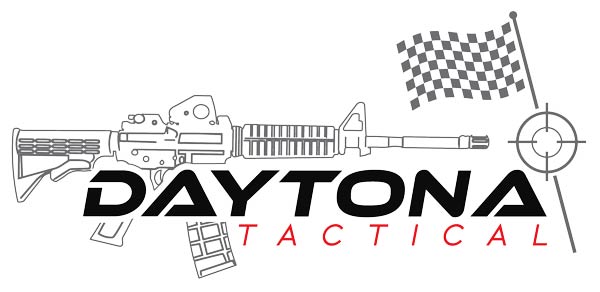
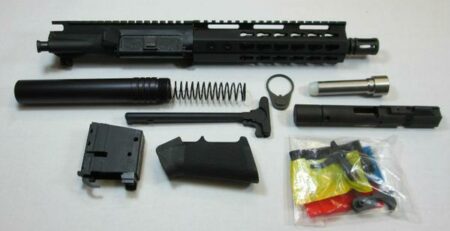
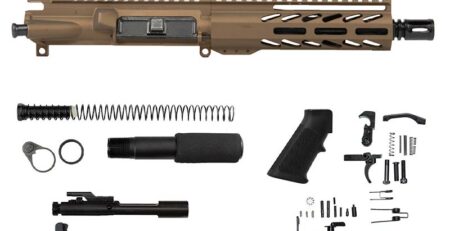
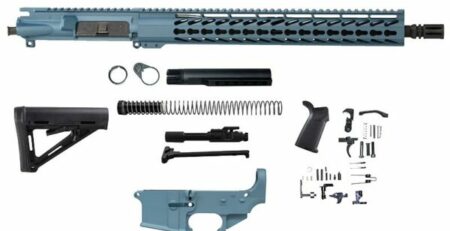
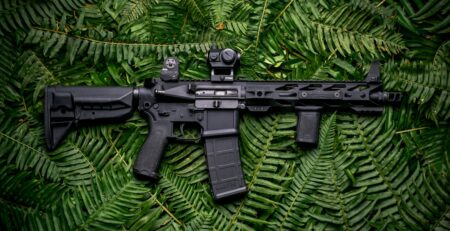
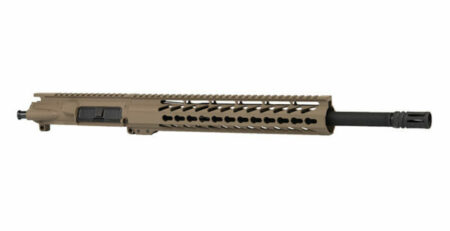
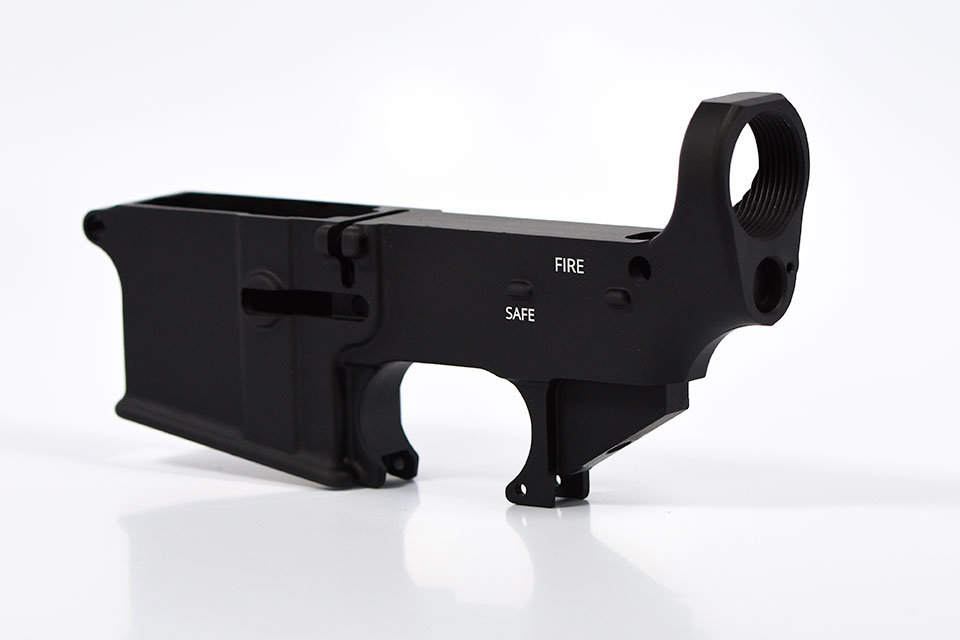
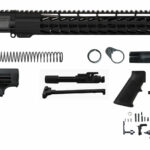
Comments (2)
[…] The ATF states that a lower receiver that has been assembled as a rifle must remain a rifle. Improper conversion can result in severe penalties, including fines and […]
[…] Headspace Check: Always recommended, although modern parts usually fit well. A “field” gauge can be a good final check to ensure everything is safe. […]
Comments are closed.